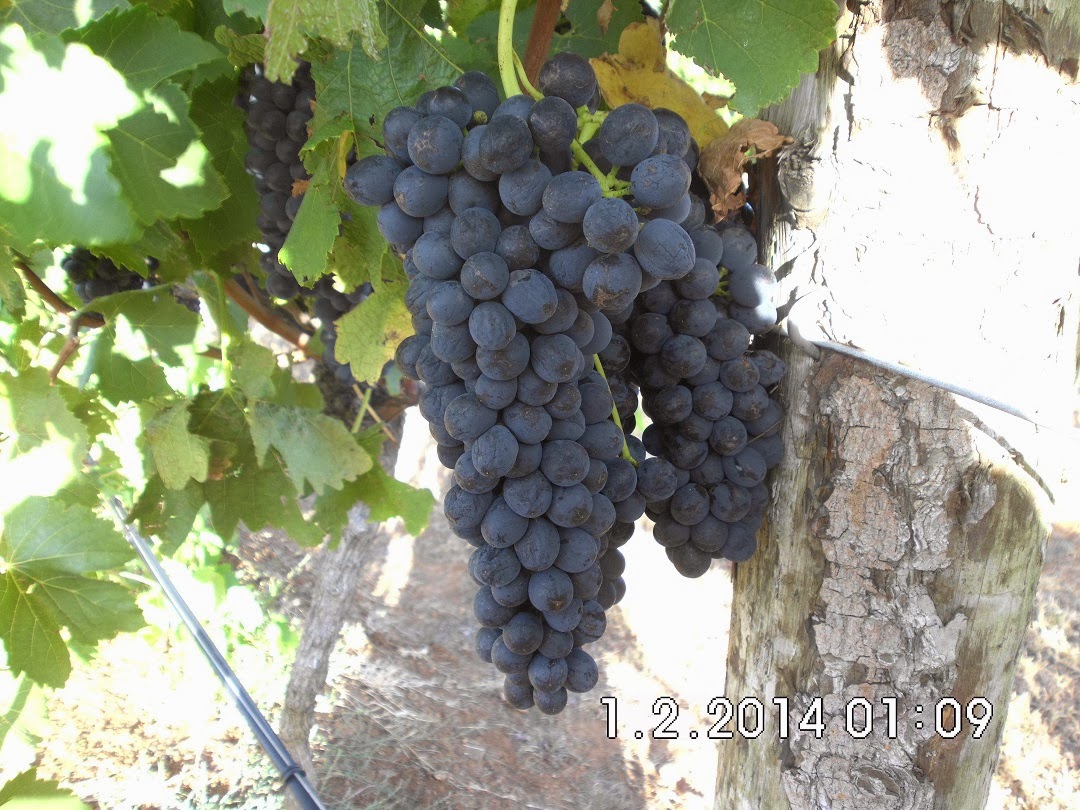Up at 4 am today to try and get to the vineyard by 6 am. They were picking Shiraz starting at 3 am but that's a bit early for me and they have headlights on their picker whereas I use sunshine.
The vineyard always looks wonderful in the light with the perfect rows and the large expanses of water.
Caught up with the vineyard manager on arrival, he looked tired. We chatted for a while and apart from the Shiraz it was mentioned that the Merlot looked good as did some of the Tempranillo. You might all say "but you were cutting back on varieties this year and merlot was one of the varieties being let go".
Yes well it was early and the temptation was just too much. But to compensate smaller quantities of each were picked meaning overall the total weight was less. Of course that will probably play havoc with the organisation of demijohns.
This year we've been giving freshly robbed honey as gifts to the vineyard managers. To sweeten the deal for them. It never hurts to be generous with people that take time out of their busy day to speak with you and provide an opportunity to obtain good fruit.
The grapes picked were all in the upper most rows in the vineyard and using the refractometer it was possible to be selective and choose the best quality fruit.
All three of these varieties have big easy to access bunches and picking went very quickly. All done by 8.30 and on the road home.
In the end the result was:
Shiraz, Brix 24, pH 3.73 just a little Tartaric adjustment done to narrow the margin between ideal and ok.
Merlot, Brix 23, pH 3.6 - perfection
Tempranillo, Brix 22, pH 3.6 again perfect.
The usual routine is to arrive home, unload the containers into chilling units and have a cup of tea while going through the accumulated notes on each variety and just make sure everything is clear about which processes will follow. The Vintage book is written up with a page for each variety, a batch number assigned, date picked and weight. The batch number is the year 4 and the sequence number e.g. 05 for Shiraz. That translates to 405 and is written on each container for tracking.
The weight is important as that will be the basis for later payment at the end of picking but also all calculations for additions of Sulphur and Oak is based on weight. In fact it is based on litres and to arrive at litres a yield of 60% is assumed. 100 KG results in 60 litres which is usually pretty close each year.
The crushing and de-stemming went quickly with one batch after another processed and put away and everything thoroughly cleaned afterwards.
As usual a Google Scholar search is performed just to see if there is any new research into these varieties and by chance a very interesting article is uncovered. Improved colour and phenolic extraction can be achieved by freezing the grapes before fermentation. The freezing explodes the cells in the skin increasing the extraction by as much as 50%. No time like the present to try this little technique. In addition there will be the 10% Saignee i.e. bleeding off the juice to make rose and increase the skin to juice ratio. A few days of cold soaking will correspond with the freezing and at the end sitting on skins for a total of 22 days. This should really extract all the goodness and colour to make a powerful wine.
This is an exciting time at HHF with so much going on and the expectation of some wonderful wines in the near future. The opportunity to become immersed in the whole wine making process and the learning opportunity associated with the science of making good wine.
With everything tucked away and chilling it was time for an early night.










No comments:
Post a Comment